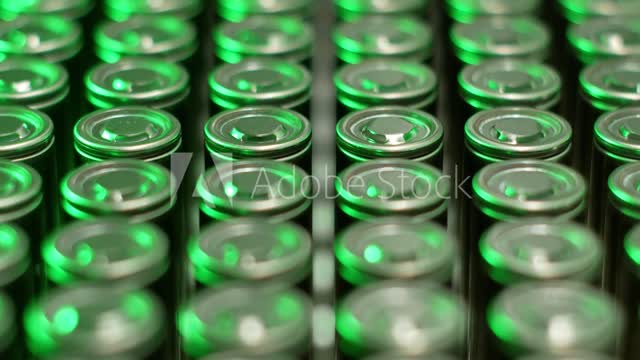Premium Only Content

Cleaner, Greener Batteries – Smashing the Limits of Power Storage
http://gestyy.com/edzYnI
Thanks to the boom in renewables, these days the limiting factor of the energy revolution is not power supply as much as power storage. Cleaner, greener batteries are needed to charge our cars, e-bikes, and devices for longer.
It is a situation all of us have been in. You’re busy with some task and the rectangular icon in the top right-hand corner of the screen turns red and flashes to indicate you’re almost out of battery. However, the problems with batteries go far beyond this kind of minor inconvenience. Batteries are a critical component of our green energy future, albeit an imperfect one.
In the future, a large portion of our energy is expected to come from renewable sources such as solar and wind. Yet we all know that there are times when the wind does not blow and the sun does not shine. To balance supply, we need to store the surplus electricity generated by renewables, until we are ready to consume it. Better batteries are one important way of doing this. If we are to power the envisioned fleets of electric cars and mobility devices, we will need huge numbers of batteries.
A big ongoing issue is that even the best batteries have problems. For example, one big sticking point with lithium-ion cells is that they use lithium as a key component. This is mined as salt. Since Europe does not presently have any large reserves, it relies on imports from only a small number of places, such as Australia and Chile. Other problems with lithium batteries are that they are expensive, have a limited storage capacity, and lose performance after repeated charging.
If we are to improve them, we need to first understand how they work. Traditional lithium-ion batteries have three key components. There are two solid components called electrodes – the anode and the cathode – and a liquid called the electrolyte. When the battery discharges, electrons stream out of the anode to the cathode to power whatever device it’s connected to. Positive lithium ions diffuse through the electrolyte, attracted to the negative charge of the cathode. When the battery is being charged up, this goes in reverse.
Energy density
The whole process is a reversible electrochemical reaction. There are many flavours of this basic process with different kinds of chemicals and ions involved. A particular option being explored by the ASTRABAT project is to do away with the liquid electrolyte and make it a solid or gel instead. In theory, these solid-state batteries have a higher energy density, meaning they can power devices for longer. They should also be safer and quicker to manufacture, since, unlike typical lithium-ion batteries, they don’t use a flammable liquid electrolyte.
“We need to continue to invest in research to validate the next generation of batteries.”
— Dr. Sophie Mailley, ASTRABAT
Electrochemist Dr Sophie Mailley at the Atomic Energy and Alternative Energies Commission (CEA) in Grenoble, France, is the ASTRABAT project coordinator. She explains that lithium-based solid-state batteries already exist. But such batteries use a gel as the electrolyte and only work well at temperatures of about 60 C, meaning they are unsuitable for many applications. “It’s clear that we need to innovate in this area to be able to face the problems of climate change,” said Dr Mailley.
About Us https://bit.ly/3GUPFOa +919942258153 kvk.subadhra@gmail.com
Thank You Very Much for Sharing YourValuable Thoughts
https://9bcef7-9260wi0gflqzepd2lrm.hop.clickbank.net
-
 0:13
0:13
WPTV
3 years agoSupreme Court limits EPA in curbing power plant emissions
7 -
 13:05
13:05
SV Ramble On
3 years agoSV Ramble On | More Fans, Batteries & Storage
18 -
 0:59
0:59
The Home Appliance Channel
3 years agoVax Power 8 Vacuum Cleaner
46 -
 2:41
2:41
Newsy
3 years agoSupreme Court Limits EPA In Curbing Power Plant Emissions
17615 -
 16:22
16:22
SwitchedToLinux
3 years agoOff-grid Linux | Running Computers on Solar Power and Batteries
184 -
 38:23
38:23
Members Club
3 hours ago $0.75 earnedShooter Strikes NYC, WNBA Wig Meltdown, and Sweeney’s Jeans Go Viral - MC05
14.5K5 -
 33:41
33:41
The Finance Hub
5 hours ago $1.90 earnedBREAKING: NANCY PELOSI JUST GOT HIT WITH A MAJOR BOMBSHELL!!!
14.3K6 -
 LIVE
LIVE
LFA TV
22 hours agoLFA TV ALL DAY STREAM - WEDNESDAY 7/30/25
924 watching -
 2:04:14
2:04:14
Pop Culture Crisis
4 hours agoOprah Tsunami BACKLASH, Billie Eilish RACIST? Joey Swoll BENDS THE KNEE | Ep. 888
34.7K8 -
 1:22:25
1:22:25
The HotSeat
3 hours agoLibs Are BIG Mad Over New Commercials and The Fed Is Just Another Political Weapon
23.2K8